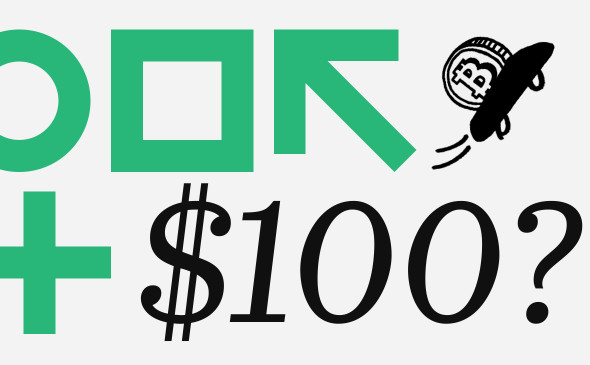Wrong Robin Hood: How startup Robinhood makes money on investors
Robin Hood in the modern era takes on unusual forms. We found out how a financial start-up for Robinhood investment takes money from the poor and gives it to the rich
Robinhood is a financial start-up that allows you to trade on the stock exchange. The company has a convenient and simple mobile app. Thanks to it, investments have become available to people who previously could not understand the financial markets because of a lot of complex and incomprehensible details. The main audience of the startup is millennials. According to the company, the average age of customers is 31 years. And the most important advantage of Robinhood over classical brokers is the lack of commissions for trading.
All this attracted a huge number of newcomers to Robinhood, and the project began to outpace the competition. But free cheese is only in a mousetrap. People started to lose impressive amounts of money using Robinhood. Now the startup is shrouded in scandals and in some ways a veil of mystery. After all, if there are no commissions, what does the company earn?
The Mystery of Robin Hood
The company was founded in 2012 by two Stanford graduates Vlad Tenev and Bayhu Bhatt. Robinhood acts as a brokerage company and allows you to trade Shares , Etf , options, cryptocurrency, and more recently shares. Bitcoin, Dogecoin, Ethereum and Litecoin can now be bought from cryptocurrency. Some other coins can be viewed in real time, but you can't buy it.
The brokerage is regulated by the Securities and Exchange Commission (SEC). Robinhood is also a voluntary member of the Financial Industry Regulatory Service (FINRA). At the moment, the app is only available in the UK and US. And that's not all states. To start investing, you need to register and pass verification. The latter can take about a day. Once the company has verified and approved your identity, you can start buying and selling tools. This is what the front page looks like from the inside out.
In the Popular Collections section, there are compilations of shares in different sectors. There is a list of the 100 most popular papers. They are most often traded on the platform.
And if you click on a specific action, you will get on the company's card. Each card has a price chart, and you can see how the quotes changed for the day, week, month, three months, year and five years. However, "glasses" (lists of applications for the purchase and sale of a tool) on this graph is not visible, it is very sketchy. Also scrolling down you can read what the company is doing, the latest news, see the forecast of analysts and the main financial indicators.
Robinhood does not charge a commission for transactions, and there is no withdrawal fee, maintenance of the account. The company makes money on another. In 2016, she launched a premium version of Robinhood Gold. With its help, investors can make trades before and after the trading session and use borrowed funds. To use the advanced version, you need to pay from $6 to $200 monthly, depending on the balance in the account.
Robin Hood on the contrary
According to The Co-Founder of Robinhood Vlad Tenev, the company receives a commission from market makers. It is thanks to him that Robinhood can afford not to charge customers for trading. This system is called PFOF (payment for order flow) - payment for the flow of orders. It is used not only by Robinhood, but also by American brokers E-Trade, Schwab and TD Ameritrade.
When a company receives an application from a customer, it sends it not immediately to the exchange, but first to market makers. These are large firms that act as sellers and buyers on the stock exchange. For this market-makers pay Robinhood a small percentage. In turn, market-makers execute the application so as to make a profit beyond what they have already given Robinhood. "We earn about $0.00026 for every dollar sold. That is, if you buy a share for $100, Robinhood will receive 2.6 cents from the market maker," Tenev explained.
Robinhood managed to earn on this scheme more than all its competitors. According to the New York Times, Robinhood earned several times more for every share sold than Schwab in the last quarter. The difference was 4 to 15 times. In total, Robinhood received almost $19,000. from trading firms for every dollar on the average customer account, while Schwab is only $195.
One of the authors wrote in an article about Robinhood on VC:"As far as I remember, in legends Robin Hood took money from the rich and gave it to the poor. In reading the startup, you can imagine this scheme as follows: to take money from the poor, to give to the rich and to receive a commission from the rich."
Although Robinhood's practice of selling client applications is not beyond the law, many condemn the platform for being on the verge of its methods. In December 2019, the startup received a fine from the American regulator FINRA of $1.25 million. The reason is that, according to the regulator, the startup did not perform its mechanism of work in the best way: FINRA accused Robinhood of not considering alternatives to find the best deals for its users, and focused only on existing partners who paid Robinhood for applications.
The road to hell is paved with good intentions
The New York Times writes that Robinhood users, more than any other retail brokerage firm, trade the riskiest products. The newspaper cites an investigation by Alphacution. It found out that during the quarantine service became especially popular. "The volatility of the stock market, at a time when the world economy is struggling with a pandemic, coupled with record unemployment, has caused a surge of interest in the application. But Robinhood has a lot of complex risky products, and there is no educational content," Business Insider writes.
Many people started trading on the platform during this period, but the result was not profit, but losses. One of the reasons is that beginners, having poorly understood in complex instruments, begin to actively trade. The second is that according to Robinhood employees, the platform itself has technical failures. As a result, disgruntled users began to come to Robinhood's office in Silicon Valley and demand an explanation. The company even put bulletproof glass near the entrance. However, she refused to comment on why.
One of those who lost money on the Robinhood platform during the quarantine was San Diego medic Richard Dobatse. It suffered its biggest losses during the March crash - $860,000. In March, Robinhood's website did not work for almost two days. At this time, stock prices fluctuated the most because of the coronavirus pandemic. Robinhood's clients could not make trades and reduce their losses. Richard said he wrote emails to Robinhood, but he was not answered.
According to studies,the more frequent investors trade stocks, the worse their profitability. The result is even more deplorable if they are dealing with options. Namely, the "put" options were traded by 20-year-old student from the University of Nebraska Alex Kearns. He committed suicide because he suddenly had a loss of $730,000 in the app. It is believed that this figure was irrelevant and was a technical feature of the application interface.
In his posthumous note, which Alex left to his family, he accused Robinhood of having approved too much credit for him. "How could a 20-year-old with no income get a leverage worth nearly a million dollars?" wrote Alex. After these events, Robinhood promised to make major changes to its platform and add educational content.







Comments
Post a Comment